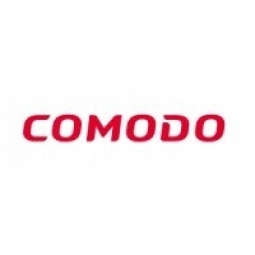Technology Category
- Sensors - RFID Readers
Applicable Industries
- Consumer Goods
- Finance & Insurance
Applicable Functions
- Quality Assurance
Use Cases
- Fraud Detection
- Tamper Detection
About The Customer
Boiling Springs Savings Bank is a local bank based in Rutherford, New Jersey, managing assets over $1 billion. The bank has been serving its community since 1939, with roots in banking dating back to the 1870s. Today, it is one of the area's largest savings banks, known for providing customers with a comfortable, friendly banking experience. However, with the rise of online banking, the bank faced the challenge of protecting its customers from online fraud, particularly from phishing sites that mimicked the bank's website. The bank needed a solution that would allow customers to verify the authenticity of its website and protect their sensitive information.
The Challenge
Boiling Springs Savings Bank, a financial institution with over $1 billion in assets, faced a significant challenge in protecting its customers from online fraud. With the rise of online banking, the bank and its customers were increasingly exposed to identity theft problems. Fraudulent or phishing sites often mimicked the bank's website, making it difficult for customers to distinguish between the authentic site and the fake ones. This issue was further exacerbated by the fact that 24% of consumers refused to conduct business online due to fear of online fraud, and 20% didn't open emails from financial institutions. Furthermore, 65% of consumers considered security protections as a key factor in their choice of bank. The bank needed a solution that would allow customers to verify the authenticity of its website and protect their sensitive information.
The Solution
To address this challenge, Boiling Springs Savings Bank implemented Comodo's SVT (See, Verify, Trust) technology. This innovative solution allows customers to verify the authenticity of the bank's website, distinguishing it from fraudulent sites. The core of the SVT technology is the Content Verification Certificate (CVC), a new type of digital certificate that provides high-level security for web page content. The bank applied CVCs to its logos, login boxes, and rate pages, binding the digitally protected content to a specific URL or IP address. Customers could then initiate the verification process using the Verification Engine (VE), a reader provided free by Comodo. Once installed, the reader would highlight the authenticated content in green, indicating the site's legitimacy. If no green highlight appeared, the customer would know they were on a fraudulent site.
Operational Impact
Quantitative Benefit

Case Study missing?
Start adding your own!
Register with your work email and create a new case study profile for your business.
Related Case Studies.
.png)
Case Study
Improving Vending Machine Profitability with the Internet of Things (IoT)
The vending industry is undergoing a sea change, taking advantage of new technologies to go beyond just delivering snacks to creating a new retail location. Intelligent vending machines can be found in many public locations as well as company facilities, selling different types of goods and services, including even computer accessories, gold bars, tickets, and office supplies. With increasing sophistication, they may also provide time- and location-based data pertaining to sales, inventory, and customer preferences. But at the end of the day, vending machine operators know greater profitability is driven by higher sales and lower operating costs.

Case Study
Series Production with Lot-size-1 Flexibility
Nobilia manufactures customized fitted kitchens with a lot size of 1. They require maximum transparency of tracking design data and individual processing steps so that they can locate a particular piece of kitchen furniture in the sequence of processes.

Case Study
American Eagle Achieves LEED with GE LED Lighting Fixtures
American Eagle Outfitters (AEO) was in the process of building a new distribution center. The AEO facility management team decided to look at alternate options for lighting layout that could provide energy and maintenance savings. AEO would need a full-time maintenance employee just to replace burned-out fluorescent tubes.

Case Study
Real-time In-vehicle Monitoring
The telematic solution provides this vital premium-adjusting information. The solution also helps detect and deter vehicle or trailer theft – as soon as a theft occurs, monitoring personnel can alert the appropriate authorities, providing an exact location.“With more and more insurance companies and major fleet operators interested in monitoring driver behaviour on the grounds of road safety, efficient logistics and costs, the market for this type of device and associated e-business services is growing rapidly within Italy and the rest of Europe,” says Franco.“The insurance companies are especially interested in the pay-per-use and pay-as-you-drive applications while other organisations employ the technology for road user charging.”“One million vehicles in Italy currently carry such devices and forecasts indicate that the European market will increase tenfold by 2014.However, for our technology to work effectively, we needed a highly reliable wireless data network to carry the information between the vehicles and monitoring stations.”









